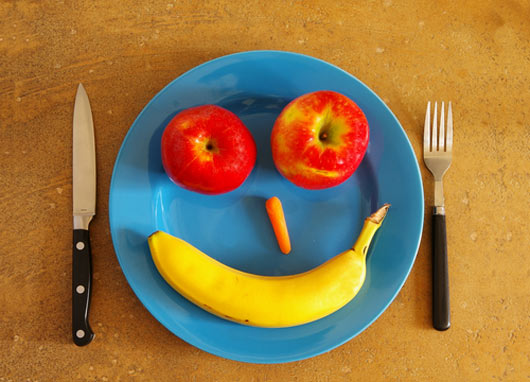
We all hear how we need to eat a balanced diet, but just what does that mean for a baby who’s just getting the hang of eating solids? Does every baby meal need several different food groups represented? Does a baby need to eat meat with every meal? So many questions!
Yet parenthood usually presents us with more questions than answers, and we’re always worried that we’re doing something wrong. But feeding your baby a balanced diet that ensures he gets the proper nutrients doesn’t need to be a source of stress. Here are some tips to be sure your little one is getting the balanced nutrition he needs.
STICK TO THE BASICS
In many ways, a 1-year old baby needs a diet that’s not all that different from an adult’s. He needs to eat three meals and two snacks per day, one mid-morning and one mid-afternoon. By this point, he’s hopefully been trying a lot of different foods and deciding what he likes. And since you’ve presumably screened for food allergies, you can safely offer him a variety of foods, and keep introducing new items to his diet.
Just like an adult, your baby needs a balance of offerings from the major food groups, though they don’t all have to be represented in one meal. However, at some point each day, he should eat protein, in the form of meat, fish or legumes, cereal or grains, including rice or pasta, fruits and vegetables, and dairy items such as milk, cheese or yogurt.
SKIP THE JUNK
Too many babies develop a taste for junk food too soon, and it’s easy to see why. Parents often have to feed kids on the go, or whip up a quick meal after a long day of work. As a result, they may quiet a hungry baby with a packet of crackers, and the only vegetable on Baby’s plate may be French fries or tater tots. So he develops a taste for these items—and in the case of crackers, they fill him up so he won’t want his meal—instead of nutrient-packed vegetables and healthy grains.
But a baby who’s never had sweetened drinks or salty, preservative-packed snacks or sugary packaged desserts won’t know what he’s missing out on. So if you don’t introduce these nutritionless-items, packed full of empty calories, he won’t beg for them or prefer them to more healthy choices. Keep his salt intake to a minimum and if you do add the tiniest pinch of salt to his food, make sure it’s sea salt. Don’t offer him something sweet—other than fruit or yogurt—just to get him to eat, and save ice cream, candy and other treats for special (and infrequent) occasions. And remember, green gummy bears do not count as a serving of dark, leafy greens!
Read Related: Meal Sizes for Infants: Are You Serving Up the Right Amount?
RELAX!
Whenever my mother would fret about one of us kids not eating right, my dear grandmother (her mother-in-law) would always say, “Don’t worry Dorothy, they all grow up big and ugly anyway!” And Grandma’s advice wasn’t so off-base. Just the other day, my pediatrician advised me not to worry so much about my 18-month-old’s narrow diet. As kids grow, he explained, they’ll try more foods and become more adventurous. When they start daycare, nursery school or pre-school and see other kids eating different foods, they’ll want to try them too. What’s most important, he said, is not to give them junk food.
All babies’ appetites and growth rates are different, so there’s no cookie-cutter method for saying how much a baby should eat. For example, my baby is tall and slender, and has been since she was a newborn. If I tried to feed her the same amount of food that her chubbier playmates eat, she’d wind up throwing most of it on the floor (yes, we’re in that phase…) and I’d wind up frustrated. So instead of figuring out her serving sizes with a scale or measuring cup and wringing our hands at how little she eats, we feed her until she’s done, without trying to force her to eat.
Unless your baby is lethargic and fussy all the time, he’s probably getting enough to eat and his nutritional needs are being met. If during regular visits to your pediatrician, he’s meeting his growth and development benchmarks, then relax, Mom and Dad; you’re doing fine. Just try to sneak in an extra helping of vegetables at his next meal!
Editor’s Note: This article is one in a series of pieces inspired by a celebration of Latino heritage and smart nutrition, brought to you by Beech-Nut/Goya.










